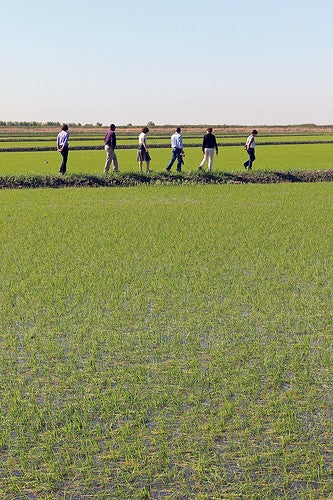California takes giant step toward approving first crop-based carbon standards
 A significant milestone was achieved today in the California cap-and-trade market. For the first time, the California Air Resources Board (ARB) considered a land-based carbon offset protocol that will allow U.S. rice growers to earn additional revenue for reducing greenhouse gas emissions from cultivation.
A significant milestone was achieved today in the California cap-and-trade market. For the first time, the California Air Resources Board (ARB) considered a land-based carbon offset protocol that will allow U.S. rice growers to earn additional revenue for reducing greenhouse gas emissions from cultivation.
This is a big deal. U.S. agriculture has tremendous potential to not only provide the nation with the food we eat, but also the climate solutions we need to sustain our growth.
Farmers grow carbon credits
The protocol covers rice cultivation practices in both the Sacramento Valley of California and the Mississippi River Valley, which encompasses Missouri, Arkansas, Mississippi and Louisiana. Growers here can implement any combination of three practices – dry seeding, early drainage or alternate wetting and drying – and collect data to be independently verified to create a carbon credit.
Nearly two dozen farmers have already expressed interest and are starting to gear up their operations to generate offsets in the spring of 2015.
The tools to succeed
The rice protocol contains a number of very important components that will help growers generate offsets. The first is the ability of growers to join together in co-operative agreements to generate a single offset project. This allows projects to decrease the administrative cost and burden for generating credits. It also maximizes growers’ revenue while minimizing cost.
Additionally, the protocol enables farmers to use a variety of state-of-the-art technologies to confirm the implementation of emissions-reducing practices on his or her farm. Farmers can use “remote sensing, video conferences, digital photographs (dated and geotagged), or digital escrow services” to demonstrate that they have implemented the chosen practice(s).
Balancing emissions reductions with wildlife benefits
Particularly encouraging is the attention the protocol pays to wildlife benefits. ARB’s technical staff carefully balanced the reduction of methane from rice cultivation with the maintenance of critical waterbird habitat for both the Pacific Americas Flyway and the Mississippi Americas Flyway. Specifically, the protocol does not include practices that decrease water or food availability to waterbirds.
To be even more cautious, the Butte Sink Wildlife Management Area – which has the highest concentration of waterfowl per acre in the world – was banned from generating offsets.
Gaining momentum towards harvest
Stakeholders at today’s meeting were overwhelmingly positive about the protocol and the precedent it sets. More than fourteen organizations provided positive written comments on the protocol and everyone from the California Rice Commission to The Nature Conservancy to Pacific Gas and Electric attended the meeting to support the protocol and urge its speedy adoption.
ARB technical staff will now consider the comments from the public and the Board and return this spring with the final version of the protocol to be voted on.
Growers now have a strong signal of the interest of ARB to include rice cultivation in California’s cap-and-trade program and can start planning to implement the practices this growing season. At this rate, the opportunity to grow credits should be finalized before rice farmers harvest their next crop.












